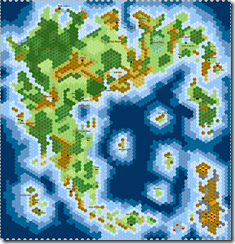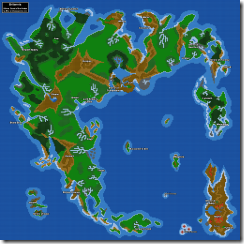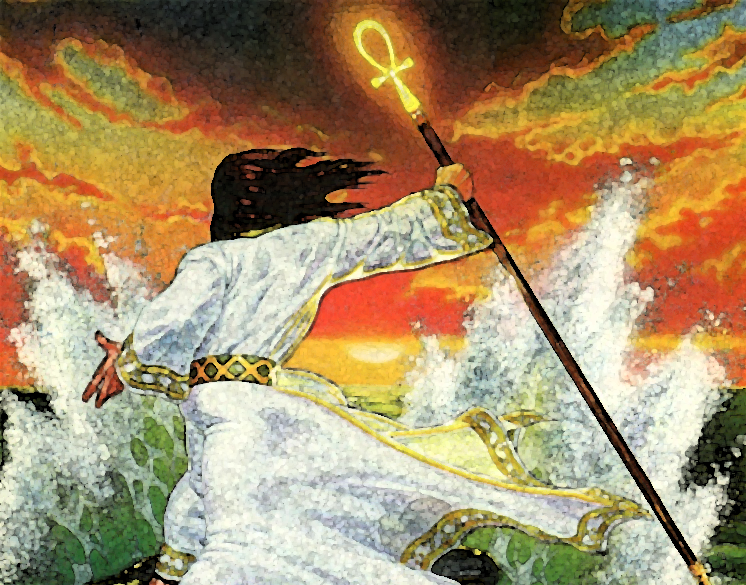What I want to write about today is something which started as a very small side project which eventually got a bit out of hand. Or you could say it’s still in the middle of getting out of hand.
 Inspired by a very awesome White Box character sheet, I decided to give Sword & Wizardry White Box another look. I couldn’t find my print copy anymore so I looked on the internet and stumbled upon a new White Box game called “White Box: Fantastic Medieval Adventure Game”. Leafing through the PDF immediately made me excited about running a White Box game again, something which I haven’t done in quite some time. So I started thinking about which campaign setting I could use. Since we are taking a break from our current Warhammer Fantasy Roleplay campaign (an important member of the player group won’t be able to come next time), I already had a time and place to run a White Box one-shot.
Inspired by a very awesome White Box character sheet, I decided to give Sword & Wizardry White Box another look. I couldn’t find my print copy anymore so I looked on the internet and stumbled upon a new White Box game called “White Box: Fantastic Medieval Adventure Game”. Leafing through the PDF immediately made me excited about running a White Box game again, something which I haven’t done in quite some time. So I started thinking about which campaign setting I could use. Since we are taking a break from our current Warhammer Fantasy Roleplay campaign (an important member of the player group won’t be able to come next time), I already had a time and place to run a White Box one-shot.
During the last week I have been basking in nostalgia already by playing some of the games from the Ultima series. So the logic next step was to combine two awesome things into one. That’s how the idea of an Ultima campaign powered by White Box was born!
After some attempts with Campaign Cartographer I switched to the easier-to-use (although less powerful) Hexographer. Using a map from Ultima IV as a basis I created a hex map of the world of Britannia. I was actually surprised how easy that was. Sure, I had to take some liberties, but overall the map turned out great.
 |
 |
| The map I created in Hexographer | The Ultima IV map I based my work on |
I decided to use Ultima IV as a basis, because that’s the game which changed the series. In Ultima IV you play a character who strives to become the Avatar, the embodiment of the Eight Virtues, Britannia’s philosophical system. There’s no big bad to defeat, no princess to save, no artifact to find. Of course there are many dangers in Britannia and even if you are not interested in following the aforementioned path you can still go on countless adventures. But I wanted becoming the Avatar be a viable option for the players. The Stranger, the hero of Ultima I-III was actually supposed to become the Avatar, but in my version of Britannia, he just doesn’t show up when the campaign starts.
If you are an expert on all things Ultima, you’ll notice that there are some slight changes from the original map and I felt free to include Stonegate even though it wasn’t created until Ultima V. I also haven’t decided on the size of the hexes, yet. If some of you has any advice, please share it in the comments below.
I also started working on a campaign world guide book. It’s nothing too fancy at the moment. I basically copied and pasted entries from the Ultima wiki and made some changes to have the descriptions better fit to my map. Some of the descriptions in the wiki refer to newer Ultima games and unfortunately the creators of the series have changed the lay of the land all too often. At this point this guide book has about 20 pages and I haven’t even started on making some changes to the White Box rules yet.
At this point I’ll probably just use the rules as written and ignore that the magic system in Britannia works quite differently. Since you can only play humans from Ultima IV on, I’ll disallow dwarf, elf and halfling characters, but all classes are available. Most monsters included in the White Box corebook have equivalents in Britannia, so there’s not much for me to do. More unique monsters like the Reaper, Headless, or Monkey Bats can probably be designed at a later point. The only thing I need now is an idea for a short introductory adventure. But I am sure I’ll come up with something.
By the way, if you are more interested in the first three games of the Ultima series and the “Ages of Darkness” they are set in, you should check out Michael “Chgowiz” Shorten’s “Siege Perilous” which he has run many times already – and with great success!
Update: I uploaded a much larger version of the map, which you can download here. I recommend right-clicking on the link and choosing “Save link as…” or using a similar function. Just clicking on the link just shows a small version.


I’ve thought about using Ultima as a pen & paper RPG setting quite a few times. And even using Hexographer to do the map (and I’m in their just-finished kickstarter for a new edition of their software, as well).
But, I was planning to use the maps from Ultima 1. More obscure/lesser-known-content , 4 continents. I figured it would give me more of a blank slate to work with, plus I like 4 continents.
What did you use for scale (how many total KM wide/tall is your map? how many hexes wide/tall?)
I eventually decided to use 6 Miles per hex. The size of the world changed a lot during the series (especially Ultima IX is tiny), so I just decided to use the standard hex size used in “White Box: Fantastic Medieval Adventure Game”. This means that Britain is about a day’s ride away from Castle Britannia. This also means that travelling per foot from one side of the map to the other side takes a lot of time. I wanted travel times to be long and dangerous. If it was just a fifteen minute stroll from one major place to the next, there would also be no real usage for moongates.
I’m about to start a campaign in the Ultima world and this map is exactly what I had hoped existed! Perfect scale too! I was wondering if you’d be willing to share the Hexographer file itself so I could use your work as a jump off point? Thanks!
Let me check if I still have it, and I’ll make it available to you if possible.
Check this out: https://sites.google.com/site/stargazersrpgstuff/files-and-documents/britannia3.hxm?attredirects=0&d=1
Thank you so much!
Using this hex map in my GURPS Ultima campaign, thanks!